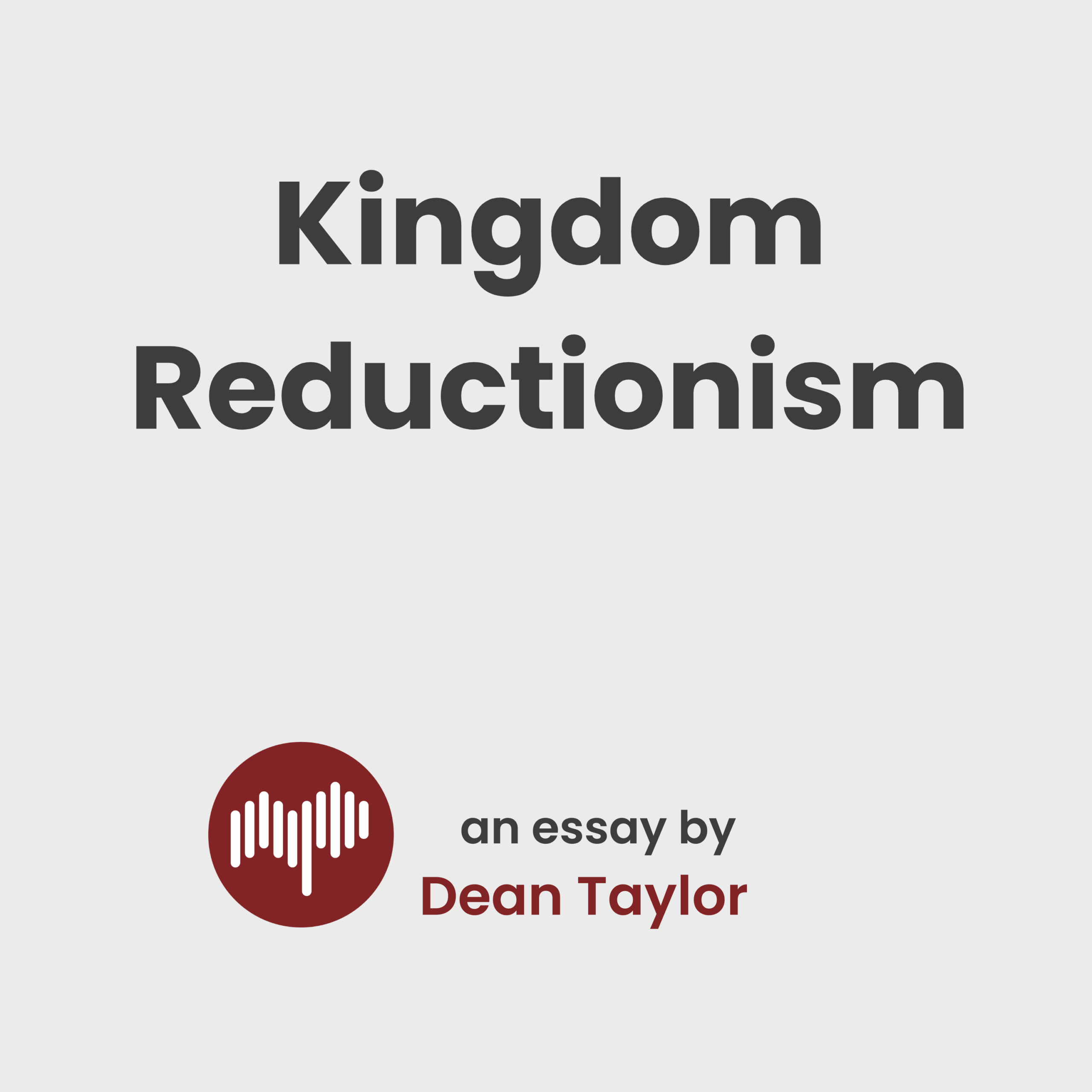Seeking Better Vision – Anabaptists, History, & the Powers
Many have offered characterizations of Anabaptism. What, at its core, is it? My suggestion is that certain kinds of historians, limiting themselves to the more or less horizontal confines of human history, are not as attuned to the spiritual realities assumed by early Anabaptists. I suggest that, in addition to historical characterization, the New Testament language of principalities and powers provides us with a valuable way to understand both early Anabaptists and what they have to do with us.
A hurried characterization
Harold Bender’s classic work, the Anabaptist Vision, highlights discipleship, voluntary church, and an ethic of love and nonresistance as central to the essence of Anabaptism. John Horsch and Franklin Littell suggest that Anabaptism is, at its core, a restitution of New Testament Christianity. Robert Friedman argues that it is existential and without theological form. Abraham Friesen suggests that it is humanistic in the spirit of Erasmus. William McGrath argues that Anabaptism is Protestantism plus nonconformity and nonresistance, Coggins that it is what is true in both Catholicism and Protestantism, and Klaassen and Lederach that it is neither Catholicism nor Protestantism, but a third way. The characterizations go on.
My goal in identifying these characterizations is not to disparage them. It’s a hard thing to characterize anything historical. This is a hazard which historians assume and one I assume by characterizing their characterizations! My goal, in this hasty sketch, is to highlight a theological dimension of Anabaptism which I feel is frequently underdeveloped. My suggestion is that attentiveness to the continuity spanning these characterizations, namely Jesus Christ’s victory over the principalities and powers, is what closes the gap between the times historians excavate and the times distinctly our own.
Such attentiveness is difficult in the times in which we live. We live now, in the post-Christian West, in a culture so seized by the immanent that it is hard to conceive of, much less live in, any reality beyond the material and verifiable. I mean that we are so preoccupied with overcoming nature, preening our individuality, or just stuffing our faces with cheap calories that we seldom consider heavenly structures which preexist us. We are living in what Christan philosopher Charles Taylor calls “a secular age,” an age where the heavenlies have been emptied into the earth. This makes it difficult to understand what the New Testament writers were referring to when they write of things like principalities and powers. Here’s what I mean by them:
A brief gesture toward the structured spaces of the heavens
The New Testament depicts Satan basically as an adversary or slanderer. This means more than personal temptation. Simply put, he is called the “evil one”1. Granted, he is a personal being, a deceiver and tempter who appeals to our conscience. But more importantly, he opposes God’s kingdom in heaven and on earth (Rev 12:4; cf. Dan. 8:10), exercises his rule on earth through earthly rulers (Rev. 13:2-4, Thess. 2:3-4, 9-10), and erects heavenly structures of his own which parody those established by the Father in the opening chapters of Genesis and carried forward to Revelation.
The point is that in the biblical worldview, in addition to being personal, Satan’s domain has a spiritual or heavenly structure. Biblical writers take up shorthand words like rulers, principalities, powers, authorities, thrones, lordships, and dominions to name and describe these beings and the heavenly relations among them. But by heavenly, I do not mean unearthly. Heavenly structures are discernable as they find corresponding form on earth. World rulers, local authorities, bad managers, and the occasional minister, participating in the structures erected by Satan, themselves become demonic. But they are not the source of the demonic.
In Ephesians 1 and 2, Paul points out how the parody structures of Satan are exposed by Jesus Christ. Jesus Christ, he claims, was not only an actor on the immanent plane of seasons and times, dirt and dust, sweat and tears (though he was certainly that!). He was not only a dispenser of affirmation and pious feelings. This man, whom God raised from the dead, is seated at the right hand of the Father, “far above all rule and authority and power and dominion, and above every name that is named, not only in this age but also in the one to come (Eph. 1:20-22).” Here is the strong man who by weakness overcame all the powers of death. Here is the man that John the Baptist warned us, and the principalities and powers, about: “Repent, for the kingdom of heaven is at hand (Matt. 4:17).” Jesus came and dwelt among us. The structures of the heavens would never be the same.
Paul narrates the position of the Ephesian church, and our position as well, in structural terms. Sometimes it helps to see ourselves this way. We live our lives and erect our little structures before a cosmic backdrop of broken principalities and powers. Everything is accountable to Jesus Christ: the powers, and powers manifest in our structures. All authority in heaven and earth has been given to Him (Mt. 28:18-20). Our lives are no longer our own, for we are “alive together with Christ … in the heavenly places in Christ Jesus (Eph. 2:5, 6).” We are thus positioned to receive the “immeasurable riches of his grace.” This is the work of God. He does this as a lavish gift, and to lavish us thereafter with his grace.
Our position with Christ in the heavens, Paul insists, is a truer picture of our place in the world than a human perspective on merely human events and history. (I have to insert that a position in the heavenlies is not in tension with our attentiveness to what’s going on here on Earth. There should be nothing more practical than our view of heaven. Any discomfort we feel with this is, I suggest, an artifact of the way the heavenlies have, in our times, been emptied into the earth.) The various projects to distill from history some essence of Anabaptism, insofar as they locate the riches of Christ back there, in some pristine era from which we imagine we have been recently dispossessed, defraud us of the riches available now. My suggestion is that, until we recover some sense of the spiritual structures within which early Anabaptists operated, we’ll miss their beckons to attend expectantly to the times distinctly ours.
A critical assessment
Until we stand beside our forebears and trace with them the cosmic spectacle inscribed forever in the heavens, we can only look on from a distance, sorry witnesses to the joy, solidarity, tenacity, and adventure which sparked with such spontaneity from their imagination. Too often, our historical methods grasp hold of them to extract a principle, distill an essence, lay hold on a confession, cast a forlorn vision, or hammer out a singular perspective on them. But we can’t really take them seriously until we realize that their secret lay not in force of will, alignment of vision, or refinement of value, but in their openness to live under a heavens reconfigured by the lamb “slain before the foundation of the world (Rev. 13:8).” This said, our forebears haven’t always done a good job of passing along what may have been patently obvious to them.
My suggestion, rash and hazardous as it is, is that the Anabaptist impulse to fully live out Christ’s victory over the principalities and powers is a source of great resilience but also volatility.
There are in this impulse two alternating tendencies. In the first, Anabaptists have historically been vulnerable to empty the riches of Christ’s victory over the powers into the immanent. I mean that we have sometimes overidentified a political structure, project of social justice, or one or the other church or social structures with Christ’s cosmic victory. The debacle at Muenster serves as a reminder of the possibilities of such overidentification.
The second tendency, I suggest, is our haste to respond so decisively to such overidentification that we altogether abandon the structures we’ve erected. Inevitably, such decisiveness simply opens the way for other structures. These, rather than being social or political, tend to rise from the forcefulness of one or the other personality. In our age, my concern is that a cycle of abandonment will take on a viciousness which, while flying under the banner of some prophetic cause, is in fact just a congenial response to the radical individualism of our age. More could be said.
Part of the Gospel that Paul offers to the church at Ephesus, and to us, is that the Lord Jesus, seated at the right hand of the Father, stands astride and judges both history and our present endeavors. He is with us. His church participates in His authority. But He also judges us and the tottering structures – historical, social, ecclesial, or otherwise – we erect. This too is the Gospel. Our task is to build faithfully while attending hopefully to the intersections of heaven and earth already appointed us. We need not go looking for the Kingdom, neither here nor there (Lk. 17:21), lest we be counted with the violent who take it by force (Mt. 11:12). In due time, if we faint not, the Father gives increase.
1Matt. 13:19, 38; John 17:15; Eph. 6:16; 2 Thess. 3:3; 1 John 2:13-14; 3:12; 5:18-19 cf. Matt 5:37 Return to context⬏








Kyle
4 years ago
Thank you, Dan, for the affirmation. I’m reminded by your comment of the need for our reflection to be both contextual (speaking to the times we live in) as well as holistic (positioning our times in the great cosmic struggle which situates everything).